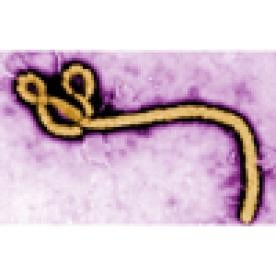Cal/OSHA recently issued interim safety guidelines for preventing exposure to the Ebola virus. California’s guidelines are aimed at identifying safety practices for the types of workers Federal officials have identified to be at potential risk of exposure in this country, including health care workers, emergency responders, laboratory staff, mortuary workers, airline flight crews, airport staff, border protection workers, and quarantine operations staff.
Since California’s workplace safety and health standards are more stringent than the federal standards for infectious diseases such as Ebola, California’s guidelines are drawn from the state standards. The new guidance recommends employers do the following:
-
Ensure workers at risk of exposure to Ebola wear gloves, impermeable body coverings, face shields or other eye and face protection, and appropriate respiratory protection. All personal protective equipment (PPE) must be adequate to prevent the passage of bodily fluids to the employee’s clothing and skin. NIOSH-approved respirators must be used where infectious aerosols are likely to be present.
-
Train employees in the use of applicable protective equipment, including respirators. Employees must be clearly instructed on how to safely put on and take off equipment.
-
Provide employees opportunities to practice with the respirators and other equipment they are to use.
-
Provide dedicated, separate areas for the donning and removing of protective gear.
-
Use either a buddy system or other means of assisting employees in donning and removing PPE. Employees who assist in removing contaminated equipment must also use PPE.
-
Provide additional protective gear, such as double gloves and disposable shoe and leg coverings, in environments where copious amounts of blood, vomit, feces or other bodily fluids are present.
-
Ensure that workers conducting aerosol-generating procedures such as intubation or bronchoscopy perform the procedures in an airborne infection isolation room, if feasible, or at least in a private room with the door closed. Employees exposed to these procedures must use NIOSH-approved respirators.
Ebola is transmitted through direct contact with the blood or bodily fluids of an infected symptomatic person or through exposure to objects that have been contaminated. Any suspected cases of Ebola must be promptly reported to the local public health department. Cal/OSHA’s Interim Guidance on Ebola Virus is available here. California Department of Public Health’s Ebola Virus Information Page is available here.




 i
i

